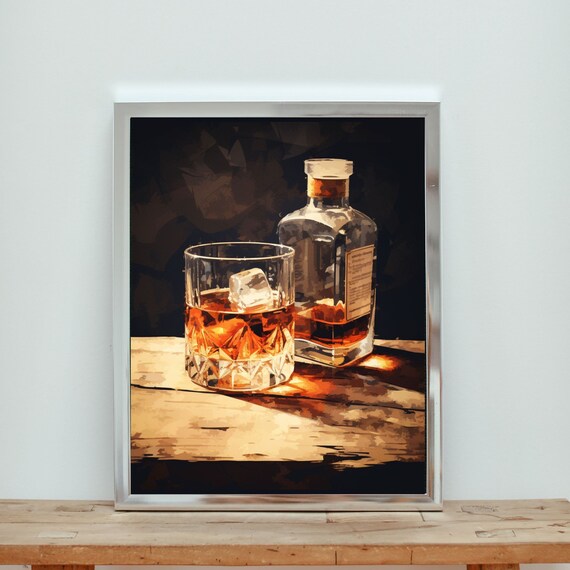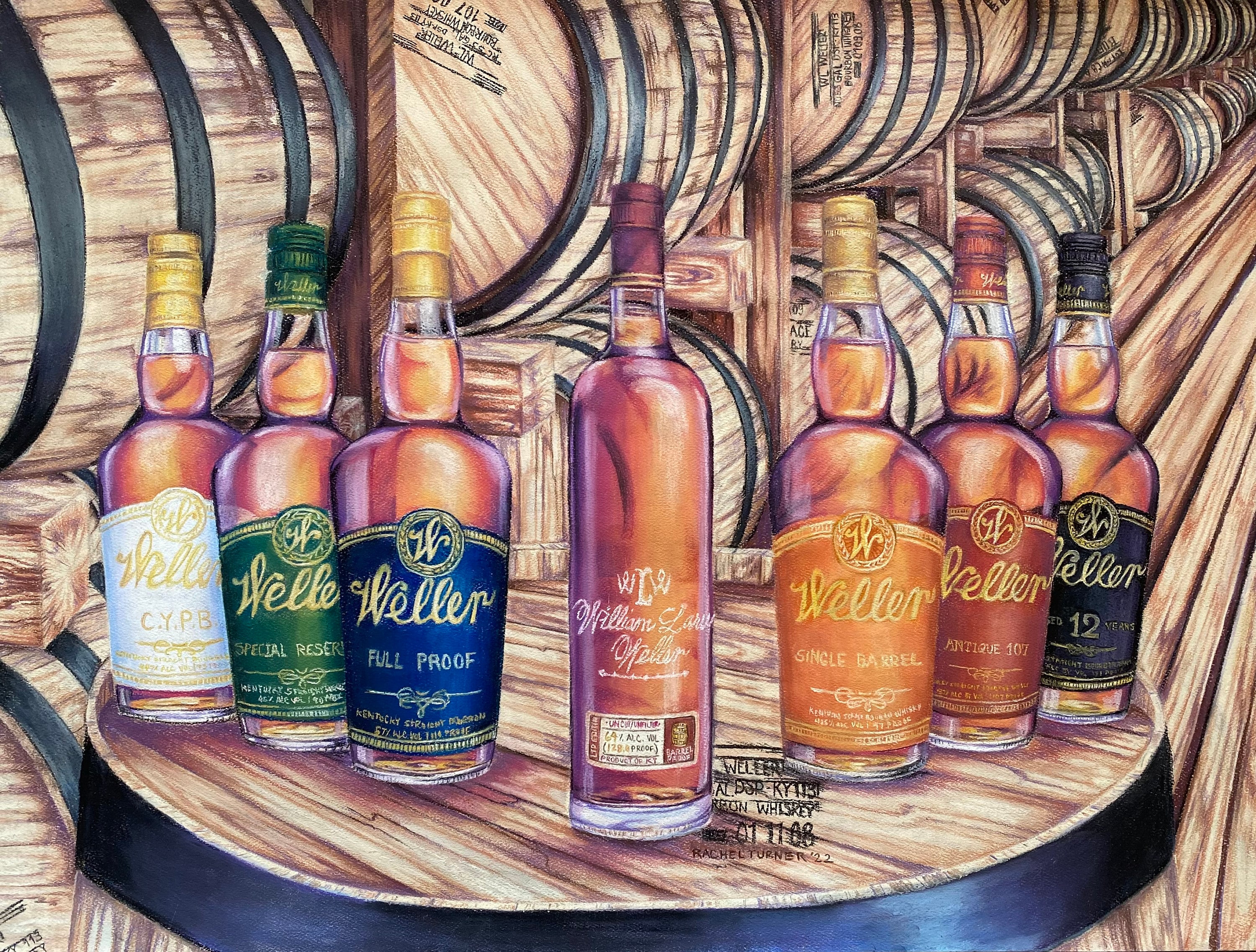Bourbon Art in Contemporary Culture: Where Practice Meets Development
Bourbon Art in Contemporary Culture: Where Practice Meets Development
Blog Article
The Importance of Whiskey Art in Celebrating Heritage and Workmanship in the Beverage Industry
The elaborate connection between whiskey art and the party of heritage and workmanship within the drink industry can not be overemphasized. With thoughtfully made labels and bottles, whiskey brand names encapsulate their historical origins and the artisanal skills that define their production approaches.
The Historical Roots of Whiskey
At the heart of bourbon's allure lies a rich tapestry of historic origins that map back to ancient people. The origins of scotch can be linked to the purification practices of the Sumerians and Babylonians around 2000 BCE, where very early types of fermented grain drinks began to arise. However, it remained in the Center Ages that the art of distillation advanced considerably, specifically in Ireland and Scotland, bring about the development of scotch as we understand it today.
The term "whiskey" itself stems from the Gaelic word "uisce beatha," suggesting "water of life." This expression underscores the cultural value of whiskey in Celtic cultures, where it was frequently related to routines, parties, and public bonding. By the 15th century, distillation came to be an acknowledged craft within reclusive neighborhoods, leading the means for the establishment of lawful distilleries.
As trade paths expanded, bourbon's popularity grew, going beyond local limits and recording the rate of interest of aficionados worldwide. Bourbon Art. This historical journey mirrors not just the workmanship behind whiskey manufacturing however additionally its integral function in social and social contexts, marking it as a substantial beverage throughout background
Artistic Expression in Branding
Bourbon branding stands as a compelling crossway of artistry and business, where aesthetic identity plays a crucial role fit consumer assumption. The looks of scotch labels, packaging, and advertising and marketing products show not just the brand's tale however likewise its core worths and heritage. Via artistic expression, distilleries convey a narrative that resonates with consumers, evoking emotions and sparking connections.
Using color, typography, and images in branding serves to differentiate products in a saturated market. Traditional motifs may evoke a sense of authenticity and workmanship, while contemporary layouts can symbolize advancement and forward-thinking. This calculated imaginative instructions boosts brand name acknowledgment and loyalty, permitting customers to forge a personal connection with the scotch they pick.
In addition, artistic expression in branding often functions as an event of regional heritage. Distilleries regularly integrate regional icons or historic references right into their styles, producing a sense of place that invites consumers to take part in a wider social experience. Ultimately, the artistry behind whiskey branding not just enhances visual allure but likewise enriches the general narrative of the brand name, cultivating a deeper appreciation for the workmanship and heritage ingrained in each bottle.
Craftsmanship in Container Layout
The virtuosity evident in scotch branding expands beyond aesthetic identity to encompass the workmanship included in bottle layout. Each container acts as a vessel not just for the spirit within, but additionally useful content for the story it informs concerning its practice, beginning, and quality. The design procedure calls for precise attention to detail, as elements such as shape, material, and closure add substantially to the general understanding of the bourbon.
Craftsmanship in container layout involves selecting top notch glass that can boost the bourbon's color and clearness, while likewise supplying a tactile experience for the customer. The silhouette of the container need to be both visually appealing and practical, typically mirroring the heritage of the brand name. Lots of distilleries choose one-of-a-kind shapes or embossed logo designs that stimulate a sense of credibility and history.
Moreover, the tag design and typography play a vital duty in communicating the brand's story. Limited Edition. A well-crafted container not just captivates the customer's eye but likewise strengthens the brand name's dedication to high quality and practice. This way, the craftsmanship of container style comes to be an important element of the whiskey experience, combining virtuosity with a profound regard for heritage
Cultural Significance of Whiskey Art
Celebrating practice and craftsmanship, the cultural significance of whiskey art goes beyond mere appearances, intertwining with the social and historical stories of the regions where it comes from. Each useful site bottle acts as a canvas, portraying the one-of-a-kind stories, folklore, and customs that have actually shaped local whiskey-making methods. The intricate designs often mirror the heritage of the distillers, incorporating signs and concepts that resonate with the culture and worths of their areas.

In addition, bourbon art plays an important role in communal celebrations and parties, working as a tangible link in between individuals and their shared experiences. By valuing the creativity in scotch packaging, consumers grow a deeper understanding and regard for the craft, eventually improving their satisfaction of the drink itself.
Modern Trends in Whiskey Presentation
In current years, the discussion of whiskey has actually evolved to reflect modern preferences and fads while still recognizing traditional craftsmanship - Limited Edition. Distilleries are increasingly concentrating on aesthetic aspects that boost the total alcohol consumption experience, connecting the space in between heritage and modernity
Innovative container designs have emerged, frequently integrating sustainable products visit this site and artistic labels that inform engaging tales. Many brands now collaborate with local musicians, instilling their items with distinct visual expressions that resonate with customers. Furthermore, limited-edition launches are frequently packaged in collectible containers, including value and allure for lovers.

Final Thought
In conclusion, bourbon art serves as a vital conduit for sharing the heritage and craftsmanship intrinsic in the beverage sector. With elaborate branding, innovative container styles, and culturally considerable artistic aspects, scotch brand names properly honor their traditions and attach with customers.


Craftsmanship in container style involves picking high-grade glass that can improve the whiskey's color and clarity, while also giving a tactile experience for the consumer. In this means, the craftsmanship of container layout comes to be a vital aspect of the bourbon experience, combining creativity with a profound respect for heritage.
In conclusion, bourbon art serves as an essential conduit for revealing the heritage and workmanship inherent in the beverage industry.
Report this page